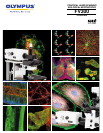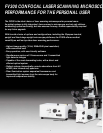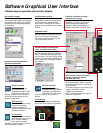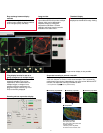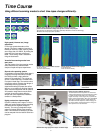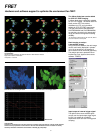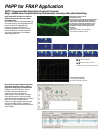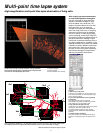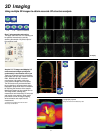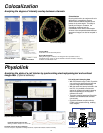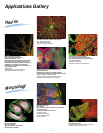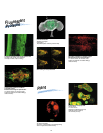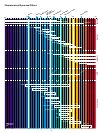
Image tool bar
X-Y-Z scanning operations and time-
lapse observations both produce multiple
images, which can be displayed in
sequence simply by clicking the
sequential mode button. Channel
selection and image zooming are also
available on the same menu.
4
Thumbnail display
Data stored in the gallery window are
displayed as thumbnails for easy viewing.
Sequential scanning to prevent cross talk
Sequential scanning may be used to minimize the fluorescence cross talk
often seen between channels in multicolored samples. This is achieved by
exciting each fluorochrome independently, one dye at a time. With the AOTF
function, line sequential scanning is available as well.
* Once optimized: steps q-r can be performed easily
Scanning unit set-up monitor display
Human colon crypt
Nuclei (Blue) TO-PRO-3
Actin (Green) Alexa 488
APC gene product (Red) Alexa 568
Christine Anderson,
Laboratory of Prof. Ray White,
Hunstsman Cancer Institute, Utah
q Excited by only HeNe633
w Excited by only Kr568
e Excited by only Ar488
r Composition
Easy exchange between display
methods
Independent navigation bars for each
image window enable the display method
to be changed quickly and easily.
Tiling display function for see-at-a-
glance comparison of multiple images
The FV300's live tiling function, which is
especially valuable in time course
experiments, allows observations of
multiple images or changes in the
specimen while the experiment is in
progress. Images in series (e.g. XYt or
XYZ) can be freely displayed.
Single monitor display is also possible.



